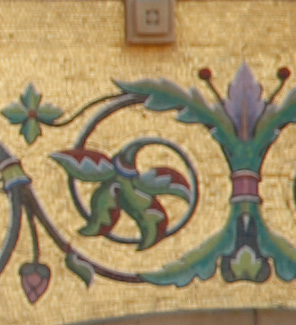
$220 SAVE $130 = 37.0% Western Digital 16.0TB Western Digital Ultrastar DC HC550 3.5-in… in Storage: Hard Drives
|

$500 SAVE $75 = 13.0% OWC 1.0TB OWC Atlas Pro SDXC V60 UHS-II Memory Card (2-Pack) in All Other Categories
|

|

|

|

|

|

|

|

|

|

|
Brand-new Blur Overview
Related: focus skew, lens mount / sensor parallelism, lens skew, optics, quality control
Buy a “pro” lens, and get pro quality—or so one hopes and expects.
Unfortunately, the reality is often different. Manufacturers such as Canon calculate MTF (a measure of lens resolution at specified contrast), based on the optical design. If MTF were measured with real lenses bought from real stores, the optical performance picture might be quite different.
Unfortunately, there’s many a slip between cup and lip, and that certainly applies to lens designs and lens manufacturing and endlessly-vibrating oceanic cargo ships. I do not know if the bad optical samples I’ve encountered over the years are due to poor quality control or mishandling after leaving the factory. But I’m certain that very large numbers of lenses are sub-par.
Over the years, I have purchased multiple Canon and Nikon “pro” lenses ($1000+ each) with obvious optical problems—right out of the box. In the worst case, a Nikon 17-35mm f/2.8 AF-S zoom was so out of whack that the camera viewfinder image was visible blurry!


Lens with brand-new blur problems (personal list)
These are lenses with which I’ve personally had out-of-the-box optical problems.
No inference should be drawn about Nikon or Canon here, but the absence of Zeiss for Nikon and Canon from this list is significant (and I’ve used 30 samples or so). That is not to say that Zeiss is perfect, but the odds are a lot better in my experience.
Note that sensor-to-lens-mount alignment can be a problem also, which makes every lens look bad, particularly ultra wide angle lenses. While this can be damage (warping), a brand-new camera isn’t necessarily perfect. This issue will become more and more clear (unclear?!) as DSLR resolutions increase.
This list includes lenses that I have personally tested and found serious issues with for specific samples. There can be poor samples of any lens, since all of these lenses are excellent performers with a properly assembled sample, and indeed I own good samples of most of them.
- Canon EF 16-35mm f/2.8L
- Canon EF 16-35mm f/2.8L II
- Canon TS-E 17mm f/4L
- Canon EF 17-40mm f/4L (see review/comparison in DAP to 16-35/2.8L II)
- Canon EF 24-70mm f/4L
- Canon EF 70-200mm f/4L IS
- Canon 50mm f/1.4
- Canon EF 85mm f/1.8
- Canon EF 100mm f/2.8L IS (reviewed in DAP with examples)
- Nikon AF-S 17-35mm f/2.8
- Nikon 14-24mm f/2.8G
- Nikon 70-200mm f/2.8G VR II (reviewed in DAP with examples)
- Nikon 300mm f/2.8 VR II (reviewed in DAP with examples)
Dummies don’t verify
There are “experts” out there with lots of opinions, but no facts. Only newbies and amateurs cough up big bucks for equipment and assume it’s working right.
Here is what pro photographer James M says about his experience (remember, this is not a Nikon or canon thing):
By the way, my fairly extensive experience testing Nikon lenses matches yours - about 1/3 are grossly defective, and another 1/3 merely irritating. I have complained in writing to Nikon's president, and the El Segundo head of customer relations, with some very modest satisfaction. Nikon will fix failed focus motors, but not gross decentering. Mention these statistics on the web, and you are sure to be flamed by fanboys who "are too busy shooting pictures (of their cat) to pixel peep".
However, as I am sure you are aware, it is extremely difficult to conduct really accurate tests. Also, the mechanical slop in many lenses can mean that it is almost impossible to repeat some tests. For example, try checking the sharpness of an 18-70 zoom holding it in different positions.
I have had 1/2 of my 13 Nikon bodies fail during the warranty period, and I am a very careful user. To their credit, Nikon has repaired every one quickly, and for free. On important trips I now take enough equipment that the simultaneous failure of any two random items is merely an inconvenience. Unfortunately, this means three bodies and at least three lenses, plus extra batteries, chargers, etc. However, it paid off handsomely in Rangiroa (the remote Pacific) in 2008, and in New Zealand in 2009.
The following pages show examples of problem lenses (not all are shown).
Issues with the TS-E 17/4L are investigated further in DAP.

















